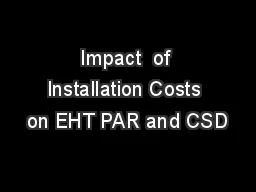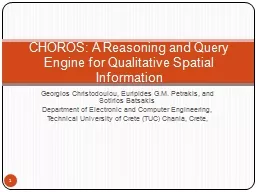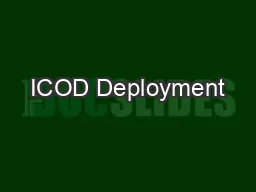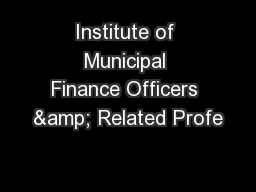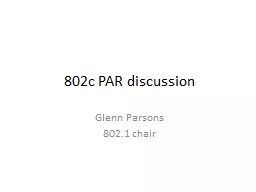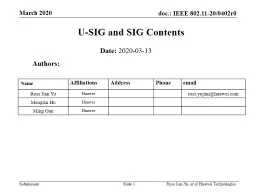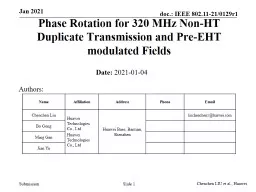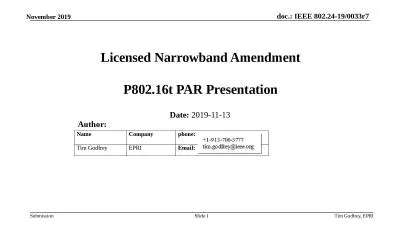PPT-Impact of Installation Costs on EHT PAR and CSD
Author : kittie-lecroy | Published Date : 2020-04-06
January 11 2019 Hart et al Cisco Slide 1 Authors Name Company Phone email Brian Hart Cisco US brianhciscocom David Kloper dakloperciscocom Peter Jones petejoneciscocom
Presentation Embed Code
Download Presentation
Download Presentation The PPT/PDF document " Impact of Installation Costs on EHT P..." is the property of its rightful owner. Permission is granted to download and print the materials on this website for personal, non-commercial use only, and to display it on your personal computer provided you do not modify the materials and that you retain all copyright notices contained in the materials. By downloading content from our website, you accept the terms of this agreement.
Impact of Installation Costs on EHT PAR and CSD: Transcript
Download Rules Of Document
" Impact of Installation Costs on EHT PAR and CSD"The content belongs to its owner. You may download and print it for personal use, without modification, and keep all copyright notices. By downloading, you agree to these terms.
Related Documents

